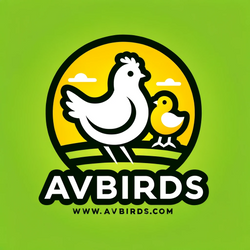Ready to welcome fluffy new arrivals to your backyard? If you’re shopping for day-old chicks for sale, you’ve probably got a million questions swirling. This guide walks you through everything you need to know to choose healthy chicks, set up your space, and raise happy hens (and a few ducks or turkeys too).
Understanding Day-Old Chicks
Day-old chicks are just what they sound like—newly hatched birds that arrive at your door ready to thrive. Most reputable hatcheries ship chicks within 24 hours of hatching to ensure they absorb their yolk sac nutrient and handle shipping stress better (Freedom Ranger Hatchery). You’ll find options ranging from straight-run chicks (mixed males and females) to sexed pullets (all females).
Why Choose Day-Old Stock
-
Affordability. You pay less for baby chicks than started pullets.
-
Variety. Hatcheries offer everything from Rhode Island Red chicks to Buff Orpington chicks.
-
Learning curve. Watching chicks grow from day one is rewarding (and educational).
Exploring Chick Varieties
There’s a whole flock of options beyond your basic layer. Let’s break down the main categories so you can find your perfect match.
Meat and Dual-Purpose Breeds
If you want birds for table and eggs, dual-purpose chickens are your go-to. They grow steadily, lay decently, and make great backyard residents. Meat-focused breeds like Freedom Ranger broilers hit market weight fast, while slower-growing heritage types build flavor.
Egg-Laying Chickens
Focused on fresh eggs? Pick from brown, white, or colorful layers. Brown egg layers like Barred Rocks deliver consistency. White layers such as Leghorns are prolific but slender. For fun hues, check out colored egg layers blue green chocolate.
Bantams and Game Birds
Love compact charm? Bantam chickens suit small coops and patio flocks. Or try game birds for a splash of exotic flair—from quail to pheasant chicks.
Waterfowl and Turkeys
Don’t stop at chickens. Expand your flock with:
Waterfowl bring personality and eggs that bake beautifully.
Sourcing Your Chicks
Finding day-old chicks for sale is more than clicking “buy now.” You’ll want a hatchery that prioritizes health, offers small minimums, and ships responsibly.
Selecting a Hatchery
-
Hatchery choice chicks often come with vet checks, Mareks vaccination, and extras like supplements (Sunnyside Hatchery).
-
Look for licensed suppliers if regulations apply in your area (The Organic Farmer).
Handling Minimum Orders
Small flocks? Hunt for hatcheries that cater to backyard enthusiasts with low-minimum batches (minimum order chicks). That way you won’t end up with a dozen roosters.
Shipping Live Chicks
The USPS is the standard carrier for live poultry. To reduce stress:
-
Pick up chicks promptly from your local post office.
-
Schedule delivery on cooler days in hot climates.
Chicks survive 48–72 hours in the mail by absorbing yolk nutrients, but less time in transit is always better (Grubbly Farms).
Setting Up Brooder
A proper brooder is a warm, safe zone for day-old chicks. Think of it as their first home away from the hatchery.
Heating and Bedding Essentials
-
Heat lamp or brooder plate set to 95°F for week one, dropping 5°F each week until chicks are fully feathered (weknowpets).
-
Clean bedding like pine shavings—avoid cedar for respiratory health.
-
Monitor temperature with a reliable thermometer at chick level.
Feeding and Watering Basics
Water is your chicks’ most essential nutrient—offer it first when they arrive (UAEX).
-
Provide chick starter feed (20–24% protein) in shallow dishes.
-
Use nipple drinkers or low-sided waterers to prevent drowning.
-
Add electrolytes to water for the first 24 hours if travel was rough.
Ensuring Chick Health
Keeping your chicks healthy pays dividends in growth and egg yield. A few proactive steps go a long way.
Monitoring for Illness
Watch for lethargy, pasty butt (clogged vents), or loss of appetite. Spotting issues early means quicker fix.
Vaccination and Prevention
-
Mareks vaccination at hatchery helps prevent tumor disease.
-
Biosecurity is key—limit traffic in and out of your brooder.
-
Clean and sanitize equipment between batches.
Planning Chick Growth
As chicks feather out, you’ll transition them outdoors. Timing and preparation matter.
Gradual Outdoor Introduction
Start with short supervised yard visits in mild weather. Let them explore under shade for protection.
Transitioning to Coop
By 4–6 weeks, many bird types handle coop life. Ensure:
-
Predator-proofing with secure latches and hardware cloth.
-
Roosts that sit 6–12 inches off the floor.
-
Adequate space (2–4 square feet per bird at first).
Gathering Essential Supplies
Before chicks arrive, stock your farm with the right gear. A little prep avoids frantic trips to feed stores.
Brooder and Feeders
-
Chick brooder supplies like heat plates or lamps.
-
Chicken feeders and waterers sized for small birds.
Incubators and Accessories
If you hatch your own, look at incubators and hatching accessories. Hygrometers, auto-turners, and egg candlers make life easier.
Next Steps and Resources
You’re now primed to pick, order, and raise your new peeps. Dive deeper into related topics:
-
For fertile eggs, explore our hatching eggs for sale page.
-
Interested in older birds? Check out started pullets for sale.
-
Use our chicken breed finder to zero in on the best match.
Have questions or a success story to share? Drop a comment below so fellow flock keepers can learn from your experience.

